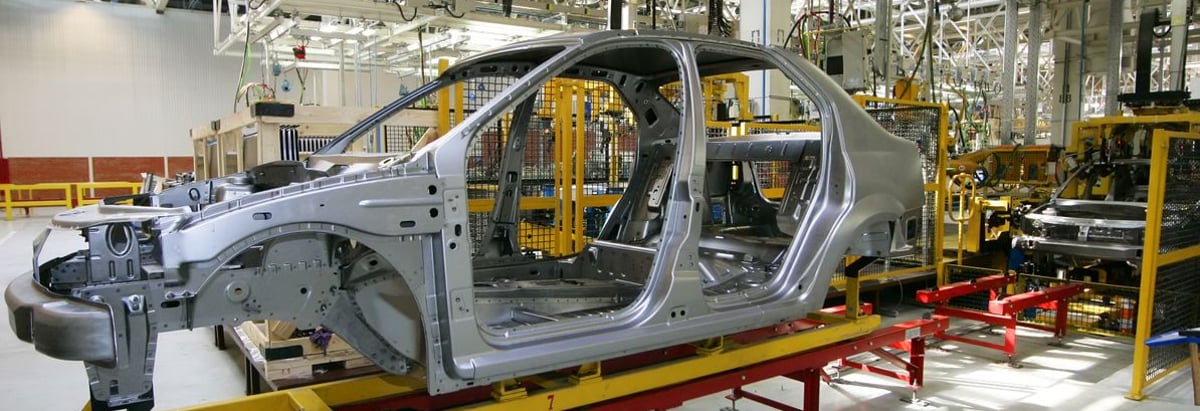Stock Analysis
- South Korea
- /
- Auto
- /
- KOSE:A000270
Public companies among Kia Corporation's (KRX:000270) largest stockholders and were hit after last week's 4.9% price drop

Key Insights
- Significant control over Kia by public companies implies that the general public has more power to influence management and governance-related decisions
- The top 6 shareholders own 51% of the company
- Institutional ownership in Kia is 28%
A look at the shareholders of Kia Corporation (KRX:000270) can tell us which group is most powerful. And the group that holds the biggest piece of the pie are public companies with 35% ownership. In other words, the group stands to gain the most (or lose the most) from their investment into the company.
As a result, public companies as a group endured the highest losses last week after market cap fell by ₩2.0t.
Let's delve deeper into each type of owner of Kia, beginning with the chart below.
Check out our latest analysis for Kia
What Does The Institutional Ownership Tell Us About Kia?
Institutional investors commonly compare their own returns to the returns of a commonly followed index. So they generally do consider buying larger companies that are included in the relevant benchmark index.
Kia already has institutions on the share registry. Indeed, they own a respectable stake in the company. This suggests some credibility amongst professional investors. But we can't rely on that fact alone since institutions make bad investments sometimes, just like everyone does. It is not uncommon to see a big share price drop if two large institutional investors try to sell out of a stock at the same time. So it is worth checking the past earnings trajectory of Kia, (below). Of course, keep in mind that there are other factors to consider, too.
We note that hedge funds don't have a meaningful investment in Kia. Looking at our data, we can see that the largest shareholder is Hyundai Motor Company with 35% of shares outstanding. National Pension Service is the second largest shareholder owning 6.7% of common stock, and Kia Motors Corp., ESOP holds about 2.5% of the company stock.
On further inspection, we found that more than half the company's shares are owned by the top 6 shareholders, suggesting that the interests of the larger shareholders are balanced out to an extent by the smaller ones.
Researching institutional ownership is a good way to gauge and filter a stock's expected performance. The same can be achieved by studying analyst sentiments. There are a reasonable number of analysts covering the stock, so it might be useful to find out their aggregate view on the future.
Insider Ownership Of Kia
While the precise definition of an insider can be subjective, almost everyone considers board members to be insiders. Management ultimately answers to the board. However, it is not uncommon for managers to be executive board members, especially if they are a founder or the CEO.
Most consider insider ownership a positive because it can indicate the board is well aligned with other shareholders. However, on some occasions too much power is concentrated within this group.
We can see that insiders own shares in Kia Corporation. The insiders have a meaningful stake worth ₩723b. we sometimes take an interest in whether they have been buying or selling.
General Public Ownership
With a 33% ownership, the general public, mostly comprising of individual investors, have some degree of sway over Kia. While this size of ownership may not be enough to sway a policy decision in their favour, they can still make a collective impact on company policies.
Public Company Ownership
Public companies currently own 35% of Kia stock. We can't be certain but it is quite possible this is a strategic stake. The businesses may be similar, or work together.
Next Steps:
While it is well worth considering the different groups that own a company, there are other factors that are even more important.
I like to dive deeper into how a company has performed in the past. You can find historic revenue and earnings in this detailed graph.
If you would prefer discover what analysts are predicting in terms of future growth, do not miss this free report on analyst forecasts.
NB: Figures in this article are calculated using data from the last twelve months, which refer to the 12-month period ending on the last date of the month the financial statement is dated. This may not be consistent with full year annual report figures.
Valuation is complex, but we're here to simplify it.
Discover if Kia might be undervalued or overvalued with our detailed analysis, featuring fair value estimates, potential risks, dividends, insider trades, and its financial condition.
Access Free AnalysisHave feedback on this article? Concerned about the content? Get in touch with us directly. Alternatively, email editorial-team (at) simplywallst.com.
This article by Simply Wall St is general in nature. We provide commentary based on historical data and analyst forecasts only using an unbiased methodology and our articles are not intended to be financial advice. It does not constitute a recommendation to buy or sell any stock, and does not take account of your objectives, or your financial situation. We aim to bring you long-term focused analysis driven by fundamental data. Note that our analysis may not factor in the latest price-sensitive company announcements or qualitative material. Simply Wall St has no position in any stocks mentioned.
About KOSE:A000270
Kia
Manufactures and sells vehicles in South Korea, North America, and Europe.

